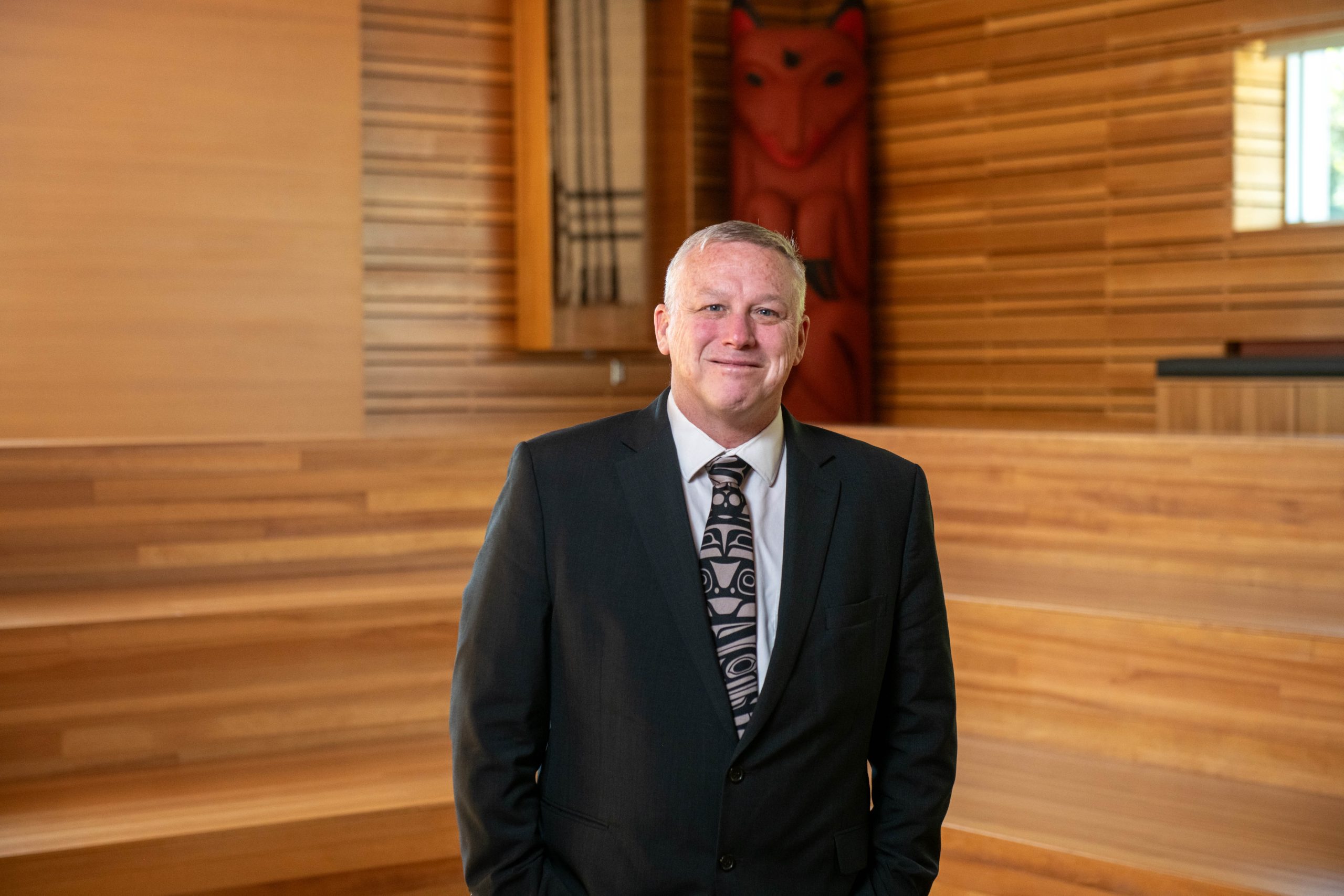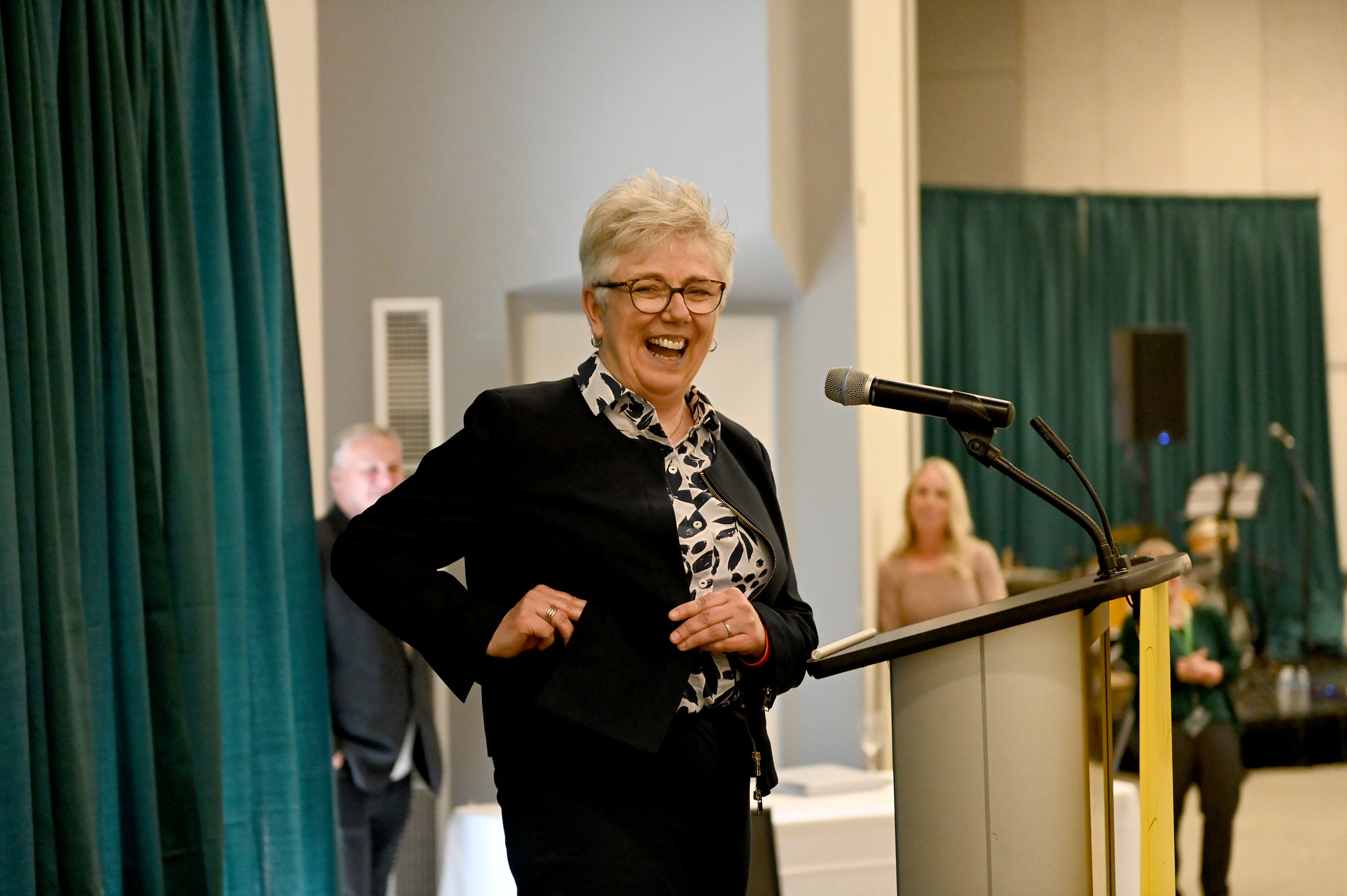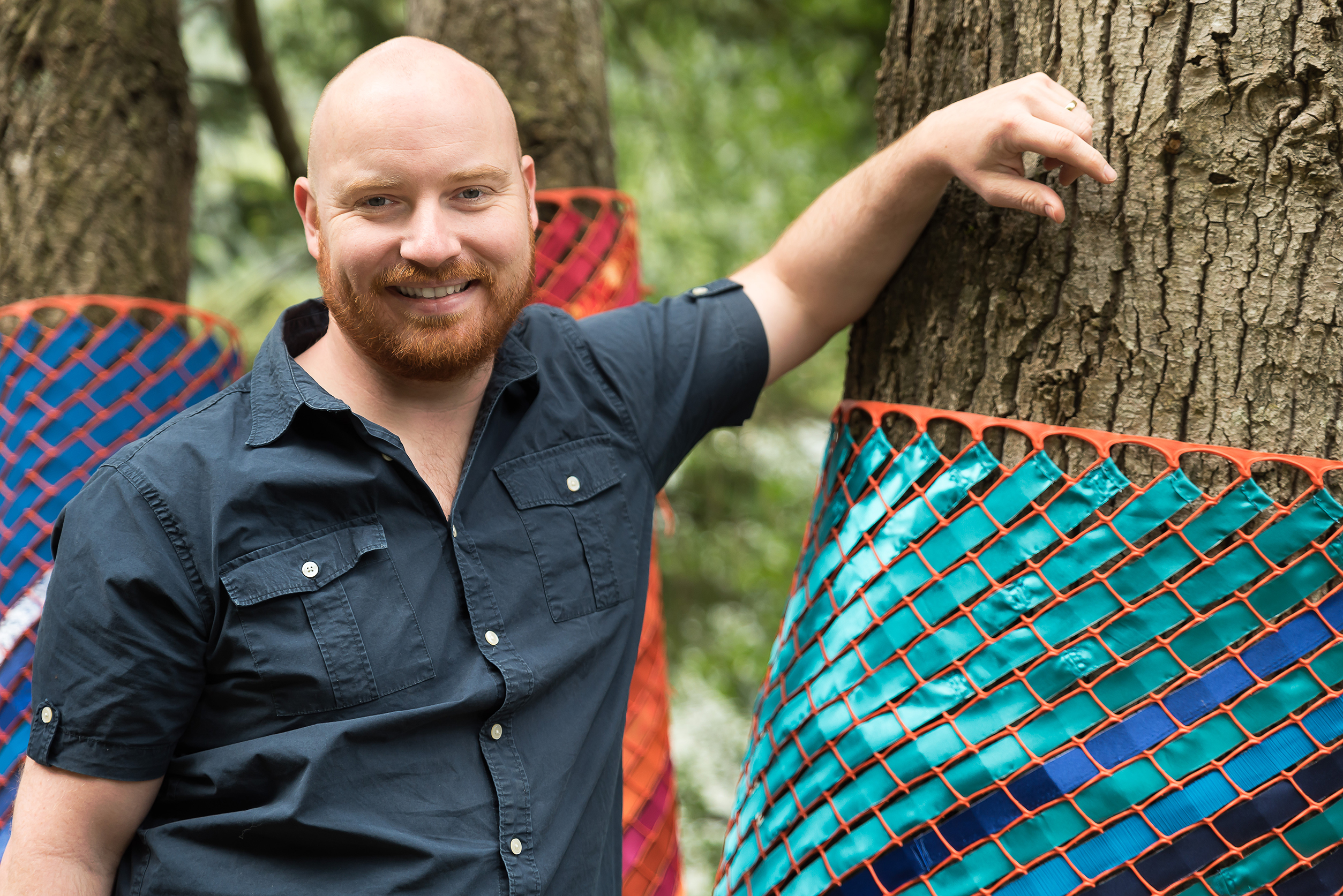First cohort of UFV Halq’eméylem graduates helps keep Stó:lō language alive
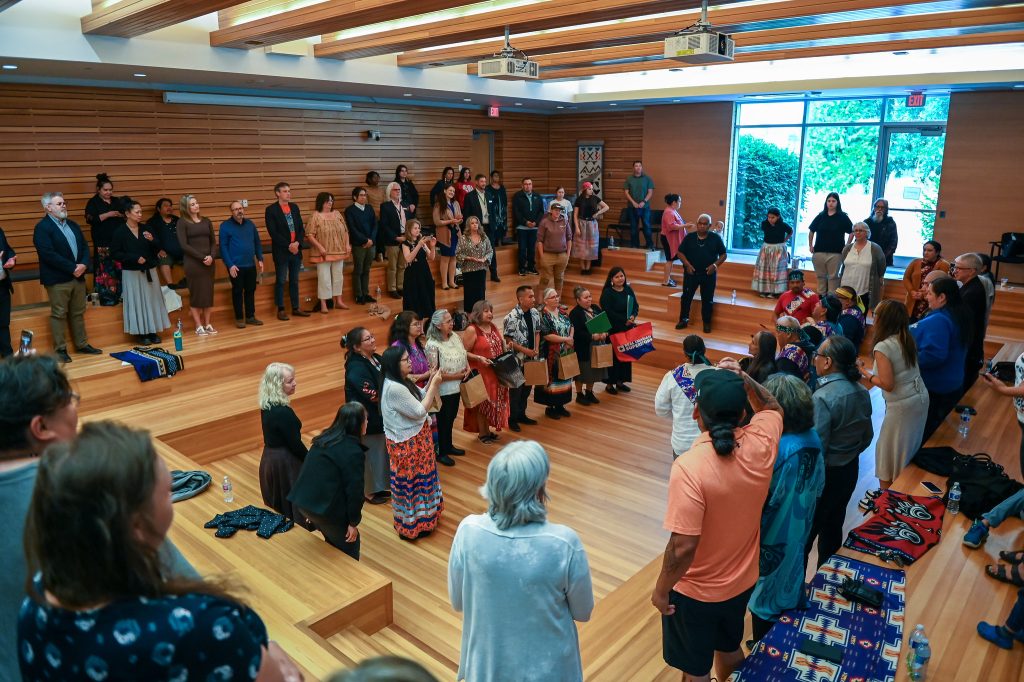
Mary Stewart never planned on being a teacher, until she found herself in the first-ever Halq’eméylem class at the Stó:lō Shxwelí Halq’eméylem Language Program through the Stó:lō Nation Agency. She was 36, with a UFV Social Services diploma under her belt and a permanent job lined up. But when the opportunity came to learn Upriver Halq’eméylem from fluent Stó:lō Elders, she couldn’t say no.
“They offered classes during the day. It was all day. So, I gave up my job and started learning Upriver Halq’eméylem. It was only going to be for six months — but it’s been a lifelong journey.”
Growing up on the Kwantlen First Nation (then known as the Fort Langley Reserve) in the 1970s, Mary had long wondered about her cultural history. Why was their location called McMillan Island? What was its relationship to the nearby Fort Langley National Historic Site? And why did no one in her village speak their traditional language?
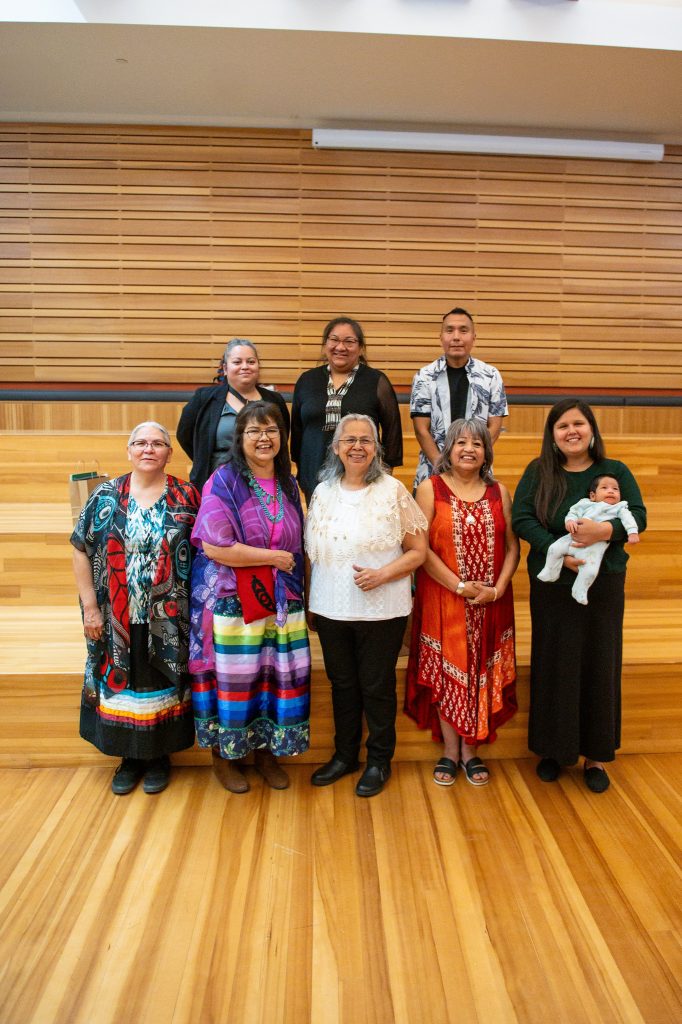
“So I said, okay, we have our own language. I’ll find out what it is. When I do, I want to learn,” Mary recalls. “I’ve always had that desire.”
With that desire, she mastered the language enough to become an associate professor in UFV’s Modern Languages department, where she’s made a career teaching Halq’eméylem to a new generation of learners. Upriver Halq’eméylem is a dialect of Halkomelem, spoken in communities all along the Fraser River and its tributaries, on Vancouver Island from Malahat to Nanoose and along the Cowichan River, and some areas of Washington.
Though thousands of years old, the oral language was first written down in 1976 by the Coqualeetza Elders Group. UFV honorary degree recipients Elizabeth Herrling and Siyamiyateliyot Elizabeth Phillips were both members of that group, recognized in 2004 and 2018 for their efforts to preserve their language.
“The Elders said, ‘Well, our children are going to public school now and are not going to be learning the language there.’ They said we’ll start documenting the language, because we didn’t have a writing system at that time. So, they worked with linguist Brent Galloway and created the orthography,” Mary explains.
Mary was one of their first cohort of 20 students, and one of five who’ve carried on teaching the language. She’s been doing so for the past 30 years.
At UFV in 2005, she taught Halq’eméylem as a single course, which has now grown to an entire graduate diploma program. UFV’s first cohort of eight Halq’eméylem graduates recently crossed the stage on June 11 and celebrated at a special ceremony in the Gathering Place on UFV’s Chilliwack campus on June 18. While Siyamiyateliyot Elizabeth Phillips is the only living speaker of Halq’eméylem who was fluent from childhood, this graduate diploma program will keep the words alive in the minds of many more.
Mary’s teachers impressed upon her the importance of teaching the language with love. She uses multiple strategies to engage her students and make lessons memorable. Storytelling and in-person discussion are vital parts of her instruction, as well as Accelerated Integrated Methodology (AIM). AIM involves the use of gestures to teach language faster and more effectively. Some gestures use symbols from American Sign Language, which has roots in Indigenous “hand talk,” and others were collaboratively invented by the students.
One of Mary’s students, Siyámíya Dianna Kay, will follow in her footsteps just as Mary followed in those of her Elders. Dianna, along with many of her classmates, will be returning home with her new knowledge to teach Halq’eméylem.
Dianna’s family has lived on Seabird Island for generations; with her new credential, she aims to preserve the language there and help create a new generation of fluent speakers. Like many other graduates in her cohort, Dianna was balancing full-time work as an educator on top of finishing her studies. Next, she’ll be completing her PhD in Education and Language Revitalization at the University of Victoria.
“It was so important that we do this work to make our teaching more robust, and to grow the language. We just want to be better at our jobs.”
Her favourite phrase she’s learned so far is “wiyóth kwsu éys te sqwálewels te lólets’e,” which means “always be a good person with good thoughts.”
“The language is the voice of our land,” Dianna says. “It’s the way the land communicates through me. It’s a connection to my past that helps me understand the Stó:lō worldview, our cultural and traditional teachings. It makes me feel closer to my ancestors.”
‘The land is lonely for the language,’ goes the expression shared by Elder Elizabeth Phillips. After years of loss and forced assimilation, many voices are joining together to sing the Halq’eméylem language into being. Mary, Dianna, and all her fellow graduates add their voices to the song — answering the call of the place where they’ve always belonged.



